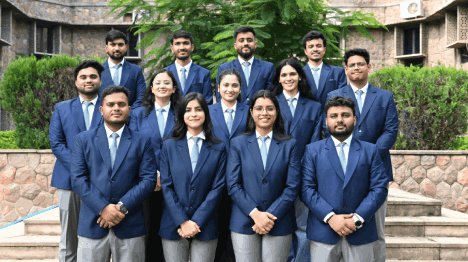- About Us
- Academics
Schools
Programs
General Information
- Faculty
The faculty members and researchers working at IIHMR University come from varied backgrounds including, but not limited to medicine, public health, management, economics, statistics, demography, human geography, social and behavioral sciences, rural development and pharmaceuticals.
- Admissions
- Research
.Publications & Journal
- Executive Education
Executive Programmes
- Online Certification Courses
ONLINE CERTIFICATION Courses
- Training
- Placements
- Fee Payment
- NAAC
- IQAC
- NIRF
- Webinars
- About Us
- About IIHMR University
- Board of Management
- Academic Council
- Board of Studies
- Research Board
- Institutional Review Board
- Finance & Audit Committee
- Departmental Research Committee
- Chairperson's Message
- President's Message
- IIHMR University Act
- Infrastructure
- Collaboration
- Ranking
- Board of Studies (School of Digital Health)
- Awards & Accolades
- Academics
- Institute of Health Management Research
- School of Pharmaceutical Management
- School of Development Studies
- School of Digital Health
- SD Gupta School of Public Health
- MBA (Hospital and Health Management)
- MBA (Pharmaceutical Management)
- MBA (Development Management)
- MBA (Healthcare Analytics)
- Master of Public Health
- Student Manual – Cohort 9 (2021-2023)
- Master of Public Health (Cooperative programme with Johns Hopkins University)
- Ph. D.
- MBA CSR & ESG Management (Executive)
- MBA Sustainable Business Management (Executive)
- Common Information for all the Programs
- Academic Calendar
- Student Handbook 2020-21
- Committees
- Policies
- Annual Exam Calendar
- Library
- Faculty
- Officers of University
- Dean of Institute of Health Management Research
- Dean of School of Pharmaceutical Management
- Dean of School of Development Studies
- Dean of SD Gupta School of Public Health
- Dean of School of Digital Health
- School of Digital Health
- Faculty List A to Z
- Faculty List Designation Wise
- Faculty List School Wise
- Admissions
- Research
- Executive Education
- Training
- Placements
- Alumni
- Events
- Job Openings
- Contact
- Research
Rapid District Baseline Survey for Pilot Projects for Population Stabilisation in Tonk and Jhalawar
Agency : Government of Rajasthan
Rapid growth in population of Rajasthan has an enormous pressure on its natural resources, which has invariably hampered all the attempts made by the GoR to improve the quality of life of the people and also in the attainment of a sustainable development. To develop people-friendly interventions and strategies, a declaration by State Population Policy commended to energise the systems to reach replacement level of fertility by 2016 via mobilizing all possible resources in all the sectors. The GoR had planned a pilot project in two districts of Rajasthan for population stabilization. Before initiating the interventions, it was inevitable to have the baseline status of the districts on indicators relating to maternal and child health and family planning to assess effectiveness of interventions.
The total population covered in the survey was 51832 in Tonk district and 45018 in Jhalawar district. Total 1255 women were interviewed from Tonk and 1152 women from Jhalawar district. The percentage of boys married at age less than 21 years was 59 per cent in Tonk and 67.1 per cent in Jhalawar. Girls married at age less than 18 years old were 44.8 percent in Tonk and 55.3 percent in Jhalawar.
The fertility characteristics showed the mean number of children born to a mother was 3 in both Tonk and Jhalawar. The 3rd birth order was found between 55-60 per cent in either of Tonk and Jhalawar. The percentage of women using terminal method was higher than those using spacing method. The percentage of terminal method users was 38.7 in Tonk and 39.0 in Jhalawar, while that of spacing method users was 21.6 in Tonk and 14.6 in Jhalawar. The unmet need for limiting was 3 per cent in Tonk and 17.7 per cent in Jhalawar. The unmet need for spacing method was high in Tonk, while for limiting method was high in Jhalawar.
The 'maternal health care' was taken care of by 50 per cent of the respondents. About 80 per cent of the women had undergone at least one antenatal check-up, about 60 per cent had consumed two doses of T.T. injection, and about 20 per cent consumed adequate doses of IFA tablets. The institutional deliveries were comparatively less than the home deliveries in both Tonk and Jhalawar.
Only 10 per cent of women practiced exclusive breastfeeding for 4 months in both Tonk and Jhalawar. Besides this, only half of the mothers fed their children with colostrums. The complete immunization of children accounted to 36.2 per cent in Tonk and 26.8 per cent in Jhalawar. Only one fourth of the mothers visited health facilities during the last 12 months of the survey. The overall satisfaction received with the health services was 87 percent in Tonk and Jhalawar.



